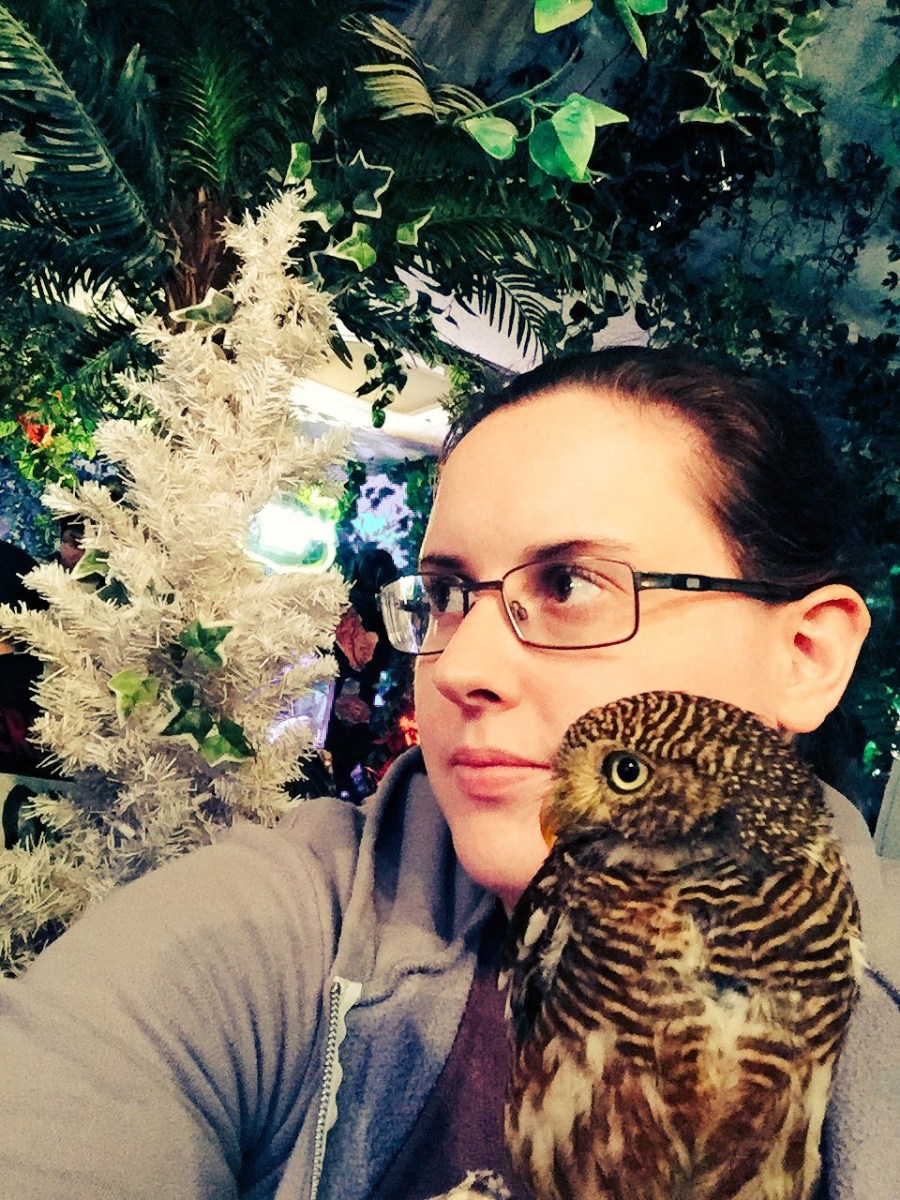
The term “digital nomad” appeared in the ‘90s to describe an emerging class of globetrotting workers. The digital nomad in those days was an edgy, lone-wolf cyberpunk character with little dependence on hearth and home. Freed from the constraints of geography, the digital nomad hops from hotspot to hostel, client to client, living out of a suitcase and funding her lifestyle with contract work.
Cate Huston is the Head of Developer Experience at Automattic. She embodies the ethos of the modern digital nomad, and maintains a newsletter chronicling her travels. Though she calls the Irish city of Cork home, you’re as likely to find her in any other corner of the world. Yet Cate’s no lone wolf. Modern communication tools have made it possible for Cate to help manage and stay in constant contact with large teams. She’s deeply embedded within the Automattic organization, helping to define how its many engineers engage with stakeholders around the company — and with each other.
Cate’s work to help other developers feel connected and productive starts with her own set of personal best practices. Remote workers know that it’s difficult to stay focused on work tasks when traveling. In order to stay productive when there’s a new city to explore every few weeks, Cate tries to maintain personal work standards. These allow her to separate her work from other facets of her life.
“I try to carve my day into two four-hour blocks,” she says. “And I just don’t expect to do anything fun during the week, so I do my touristing on the weekends. I really just go and spend a month in a place, and try to live there.”
Cate has trained herself over the years to live and work with minimal creature comforts.
I have my certain needs, which are pretty minimal, like breakfast and some form of exercise, and that’s it. And so I just orient myself on, “This is breakfast and here is a place to work, there is tea, and this is how I’m going to get regular exercise,” and then honestly that’s fine, that’s all I need.
Cate’s worn several hats at Automattic since she joined the team in 2017. She started out as the lead of the Mobile team, then spent some time leading Jetpack’s engineering teams. After a stint working on the Gutenberg block editor, she took the lead in Developer Experience, a role that defines and shapes what it means to be an engineer at Automattic. That starts with the hiring process.
Hiring for a Strong Distributed Engineering Culture
In a distributed setting, expectation-alignment between managers and individual contributors is especially important, and that alignment needs to begin in the hiring phase. Remote employees should have a clear picture of what their work life will look like in terms of hours, communication etiquette, and other factors that affect the day-to-day work experience. In a colocated environment, employees are typically able to observe and assimilate into company culture more readily, since they can watch that culture play out in interactions around the office. Remote workers can’t observe company culture in such high fidelity, and employee handbooks can only serve as a partial substitute for relaying this information. Instead, hiring managers should aim to express the company culture during the interview process and attempt to get to know their prospective teammates on a personal level. This may take the form of coding exercises and review. Some partially-distributed companies will fly applicants into the headquarters or meet up with them somewhere for some face time. As a result, the hiring process for engineers at distributed companies will take longer than it would at a traditionally colocated company.
Another factor that prolongs engineers’ hiring process at distributed companies is their inherent competitiveness. Distributed roles can potentially be filled from a global supply of talent, and an increasing number of engineers desire jobs that allow them to work remotely. Cate encourages both hiring managers and applicants to have patience.
[In] distributed companies, you can’t tell really if someone doesn’t show up to work. I mean, you can eventually tell, but it’s much easier to disappear. The level of trust required is much higher. And so there is a portion of the [hiring] process that is earning that trust.
Healthy Feedback
Cate encourages managers of distributed teams to pay special attention to how well applicants respond to feedback. An aptitude test of some kind serves as an opportunity to determine an employee’s willingness to accept feedback and update their work accordingly. This willingness can be more important than a candidate’s overall skill level, Cate says.
“We are not hiring people just for what they’re capable of today,” says Cate. “We see it as a long-term commitment.” Cate advocates recruiting engineers based on their potential growth, and she finds the best predictor of that ability to grow in their response to feedback.
If we give people feedback, and they take it and multiply it and do a lot better, then we feel way more excited about hiring those people than the people who take the feedback and they’re okay with it. And then of course the people who don’t take the feedback well at all, we reject them.
What does it mean to accept feedback well? Cate says that it begins with self-awareness. When people completely lack this quality, they are incapable of setting aside their ego and looking at a problem from someone else’s perspective. They will approach a conflict with their mind made up, convinced that their interpretation is correct.
I think people’s first reaction to feedback is to be defensive. It creates conflict, it means you don’t really learn what’s happening, and it shuts the conversation down or it makes the conversation about your feelings rather than what this person is trying to tell you.
According to Cate, you can spot a person who lacks self-awareness in the way they talk about themselves.
Some people want to be seen as really nice or really caring, for example, but they might not be very caring. And so they’ll talk a lot about how caring they are but they’re actually not. And so this gap between the way that somebody talks about themselves and their actions will show you this gap in self-awareness.
If a person wants to grow in this area, how can they develop a sense of self-awareness? Cate argues that it’s easier said than done.
“It’s horrible,” she says. “It’s a lot of therapy and coaching and just being willing to confront the pieces of yourself where you know you’re not as good as you would like to be.”
Cate also recommends broadening one’s perspective, being open to possibilities outside one’s worldview, exposing oneself to stories from different kinds of people, and visiting places where different kinds of people live. The antidote to a lack of self-awareness is curiosity. Learning about how other people live and think will enable you to step outside your own perspective and reflect on your own shortcomings. If someone gives you feedback that makes you uncomfortable, rather than shutting down, lean into it and ask questions. Cate encourages people to not make excuses, but to instead focus on solutions to the problem. “If somebody cares about you enough to tell you that they think you should do better then it means that they believe that you could do better.”
Ensuring Every Team Member Counts
Once the company decides to hire and onboard developers, a team like Cate’s Developer Experience works with them to ensure that everyone feels valued and has the opportunity to have their voice heard.
Cate explains that inclusion of all team members isn’t necessarily more difficult on distributed teams. It’s simply that the work of inclusion must be more intentional. In a traditional colocated office environment, Cate explains, you might think your team is very inclusive. After all, everyone has lunch together, the team has group activities, and most of today’s engineering teams have regular, if not daily, standup meetings. But in a distributed context, managers don’t have that kind of visibility, so they need to think carefully about how to ensure their teams are working together and that everyone feels like they have the space to contribute.
You’ll say, “Okay, well now I have a new team, and I want that team to be coherent, so how do I make it coherent? How do I make sure that the team understands what their mandate is? How do I make sure they understand what their priorities are? So how do we maximize the value of a meetup so that people come away the most aligned that they can be?”
Moving further up the developer-experience chain, leadership management is crucial. The autonomy of the distributed system informs the way that engineering leads at Automattic are encouraged to run their teams. This gives managers the flexibility to leverage their own personal management style in order to make the team better.
A senior engineer makes the whole team better, but we don’t want to be prescriptive about how people made the team better. That was up to them. There were options, but that was the expectation for everyone on the team. You come in, you’re an experienced engineer, we expect you to be making the whole team better in some way, and what that looks like is up to you.
“Everyone is additive,” says Cate, and “everyone is allowed to be unique.” Cate sees it as her role to make sure that everyone in the organization has both the autonomy and the support they need to “operate from a place of strength.”
In a distributed context that encourages everyone to preserve their uniqueness, leaders need to think carefully about the personality types of their colleagues so that a diverse spectrum of people can feel included. Introverts, for example, tend to thrive in a remote context, but Cate argues that extroverts sometimes require a thoughtful approach to structure and community. The struggles that people encounter on distributed teams are often not directly work-related but instead stem from bigger social needs that the work environment isn’t addressing. At their best, offices give people a sense of camaraderie and social cohesion. Cate argues that in a distributed context, some personality types have difficulty in the absence of daily face-to-face communication, and in extreme cases, some are prone to forgo social interaction as a whole.
They struggle to give themselves the structure in their day. They can start work whenever and so they do, and then they finish work at 2:00 in the morning… Starting your day at 4:00 in the afternoon and working until 2:00 in the morning is maybe not that good for you. It’s normally quite bad for your social life unless you are friends mainly with bats.
“As someone’s manager,” Cate says, “I care about them as a human being, but I’m not their mom.” Managers can’t tell people how to live their lives outside of work, but some habits might ultimately affect their ability to perform at work, so they need to listen and make themselves open to spot potential problems before they arise.
Cate relies on her own distributed-work experience to help her build and maintain a healthy environment for Automattic’s hundreds of engineers, scattered across the globe. The company’s distributed structure grants Cate a level of autonomy that enables her peripatetic lifestyle, but she’s cognizant of the ways that the freedom to chart one’s own course can feel overwhelming to others. But by ensuring that the people the company hires are the best-equipped to do well in a remote context, and by promoting a culture of healthy feedback and inclusion, she makes it possible for a large-scale engineering operation to thrive — even when colleagues don’t see each other in person for more than a couple of weeks a year.


